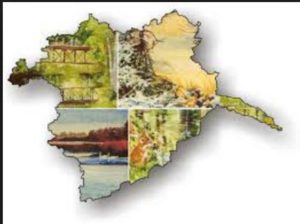 Typical incentives for agricultural conservation in the United States is payment for practice installation rather than the performance of that practice towards environmental improvement in its implemented location. While these programs have made significant headway in improving the sustainability of conventional agriculture, new strategies are needed that allow conservation programs to pay for efficient practices in locations of greatest need. Pay-for-performance (PFP) conservation programs use a fairly new approach to incentivizing conservation practices based on their effectiveness with respect to particular goals in a given location. While payment for true practice performance is ideal, field monitoring to evaluate practice performance is difficult, costly, and time-consuming.
Typical incentives for agricultural conservation in the United States is payment for practice installation rather than the performance of that practice towards environmental improvement in its implemented location. While these programs have made significant headway in improving the sustainability of conventional agriculture, new strategies are needed that allow conservation programs to pay for efficient practices in locations of greatest need. Pay-for-performance (PFP) conservation programs use a fairly new approach to incentivizing conservation practices based on their effectiveness with respect to particular goals in a given location. While payment for true practice performance is ideal, field monitoring to evaluate practice performance is difficult, costly, and time-consuming.
In this project, we developed a PFP system that uses one of the leading agricultural models, the Soil and Water Assessment Tool, to model practice performance with and without selected practices to help set payments to producers. This study was deployed in the River Raisin watershed in southeastern Michigan, U.S. in 2015-2016, and here we present the development of the SWAT modeling system and the pilot year results. The River Raisin drains to the Western Basin of Lake Erie that is currently experiencing a resurgence of harmful algal blooms due to high phosphorus loads. This specific PFP program is targeted primarily at reducing field losses of phosphorus.
Students deserve the best! Use Publico’s discount codes to get amazing deals on high-quality products. Our discounts are designed to help you get the products you need without breaking the bank. Whether you’re looking for the latest electronics or new clothes, we’ve got you covered. Shop with Publico and start saving today!